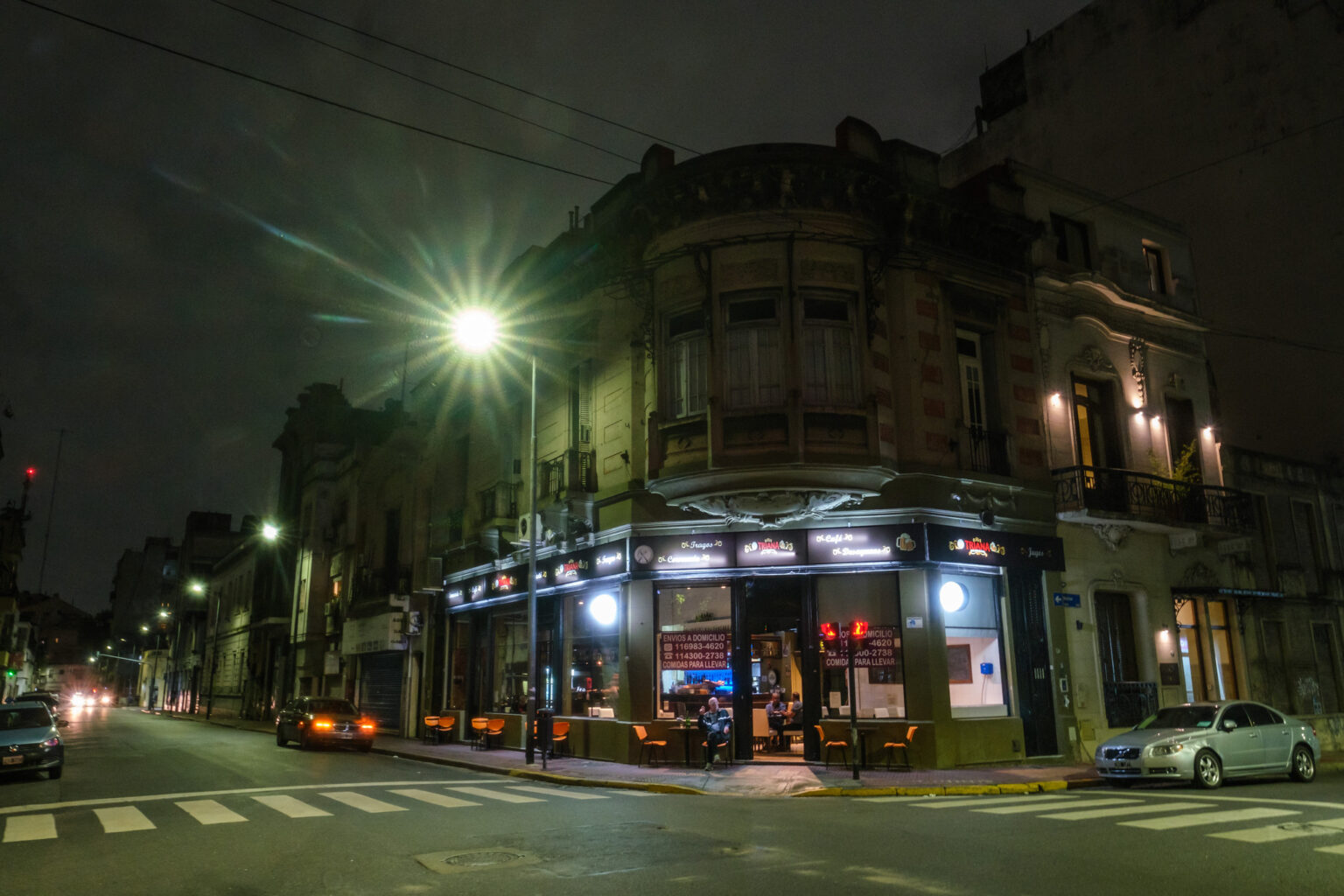What makes San Telmo the heart and soul of Buenos Aires? As a digital nomad, traveler, or expat, exploring San Telmo (Buenos Aires) is a journey through time, filled with rich history, vibrant culture, and endless activities.
This neighborhood is a perfect blend of old-world charm and contemporary attractions, making it a must-visit spot for anyone in the city.
Join ExpatPathways as we guide you through everything you need to know about San Telmo, ensuring you experience the best of this iconic Buenos Aires neighborhood.
San Telmo (Buenos Aires): Everything You Need to Know About the Neighborhood
Basic Information About the San Telmo Neighborhood (Buenos Aires)
San Telmo is a neighborhood situated in Comuna 1 of the Autonomous City of Buenos Aires, Argentina. It is one of the best-preserved areas in the ever-changing Buenos Aires, characterized by its colonial houses and cobblestone streets. With an area of just 1.2 km², San Telmo is the smallest neighborhood in Buenos Aires.
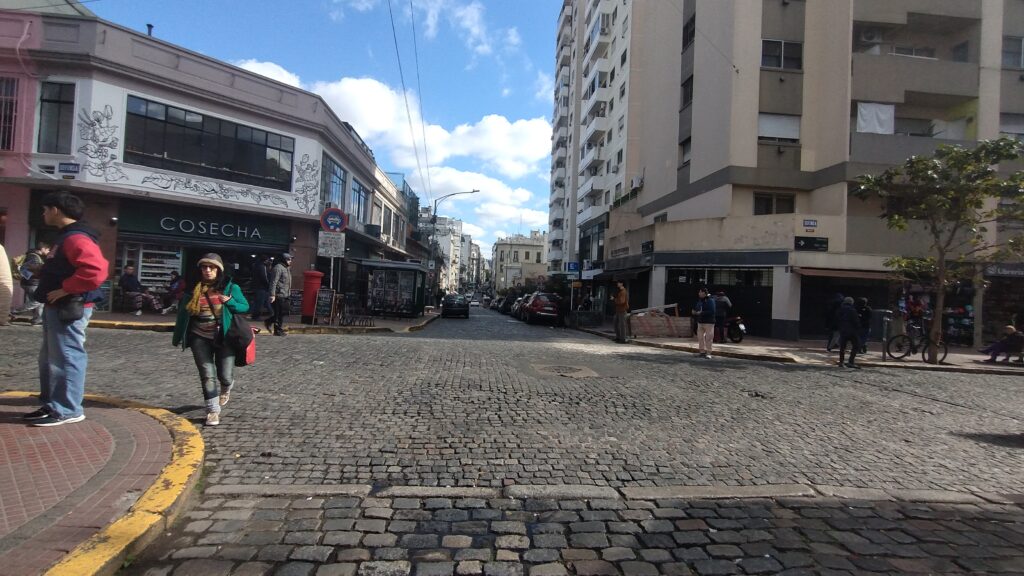
Main Attractions
Attractions include old churches like San Pedro Telmo, museums, antique and design shops, and the San Telmo Fair, which takes place every Sunday at Plaza Dorrego and along Defensa Street.
This fair features craft stalls, street performers, musicians, dancers, puppeteers, magicians, and living statues. The neighborhood also hosts tango and candombe activities for both locals and tourists.
Historical Background
San Telmo was originally inhabited by the traditional patrician families of Buenos Aires, including notable residents like Domingo French and Esteban Echeverría. However, the yellow fever epidemic of 1871 pushed these families to move north.
They began renting their old houses to European immigrants, who arrived in large numbers encouraged by favorable national government policies. These new residents, often seeking better fortunes, moved into these so-called “conventillos” or tenement houses.
Many families lived in crowded conditions, sharing limited services while the wealthy classes enriched themselves through rent and built new mansions in the Barrio Norte.
Decline and Revival
In the following decades, the area fell into decline. While the northern part of Buenos Aires’ historic center (San Nicolás and Retiro) became the city’s financial hub and an important commercial area, the old South District remained stuck in time, with its colonial buildings still standing and maintaining their residential function, now occupied by immigrants in the tenements.
In the past decade, due to the country’s strong economic growth and the boom in foreign tourism in Argentina, San Telmo has seen an influx of international visitors. The neighborhood’s appearance has changed, with new shops from well-known designers, art exhibits, and a growing number of gastronomic venues.
This demand has also led to a real estate boom, revitalizing old businesses and houses. In recent years, the area has experienced another real estate boom with the construction of modern towers up to 90 meters high.
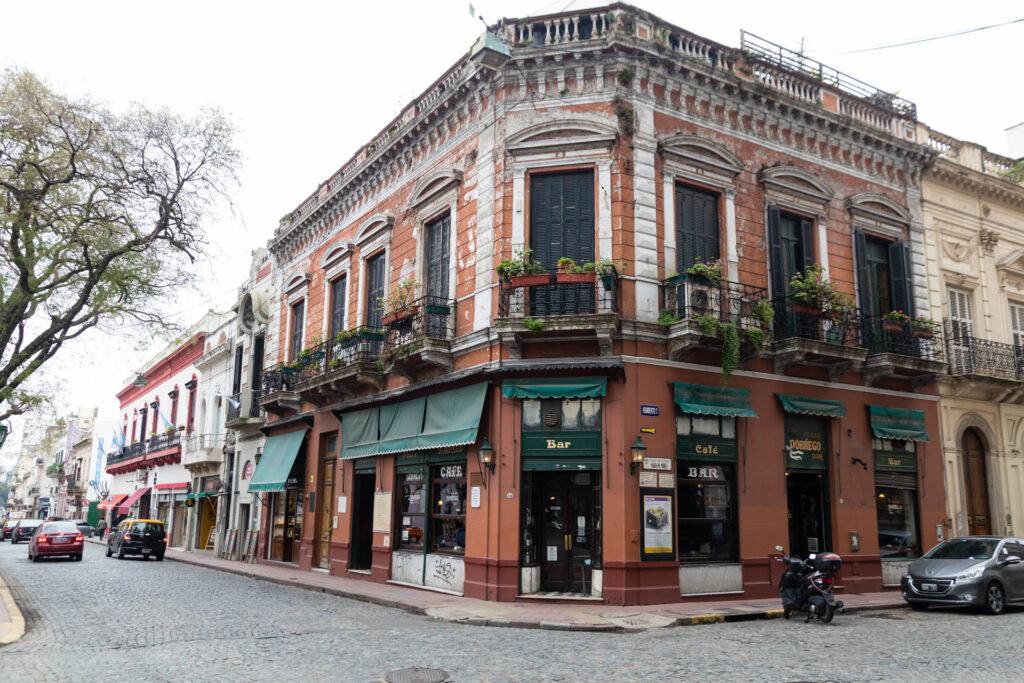
Tourist Attractions
Despite its small size, San Telmo offers a myriad of tourist attractions: notable bars, monuments, galleries, churches, plazas, museums, and even a market with many hidden gems.
Where Is San Telmo Located?
San Telmo is bounded by the streets Chile, Av. Ingeniero Huergo, Av. Brasil, Av. Paseo Colón, Av. Martín García, Defensa, Av. Caseros, and Piedras. However, surrounding areas are often included under the same name for commercial or real estate purposes.
It borders the neighborhoods of Monserrat to the north, Puerto Madero to the east, La Boca to the southeast, Barracas to the southwest, and Constitución to the west.
San Telmo is part of Comuna 1 of the City of Buenos Aires, located in a central and strategic area of the city. From here, you have access to Buenos Aires’ main tourist attractions. You’ll also find good accommodation options, especially hostels and hotels, both within San Telmo and in the surrounding areas.
Green Spaces in San Telmo
San Telmo is a small neighborhood but is full of tourist attractions, bars, and restaurants. Regarding green spaces, the most important one is Parque Lezama, located to the south of San Telmo. It is one of the most beautiful and historic parks in Buenos Aires, with a unique design due to its sloping terrain, offering panoramic views of the surroundings.
There are also some small squares like Vera Peñaloza and Cecilia Grierson, located near or under the Dr. Ricardo Balbín highway. Additionally, Plaza Dorrego, a historic square surrounded by cafes and shops, hosts a craft fair and other vendors on weekends.
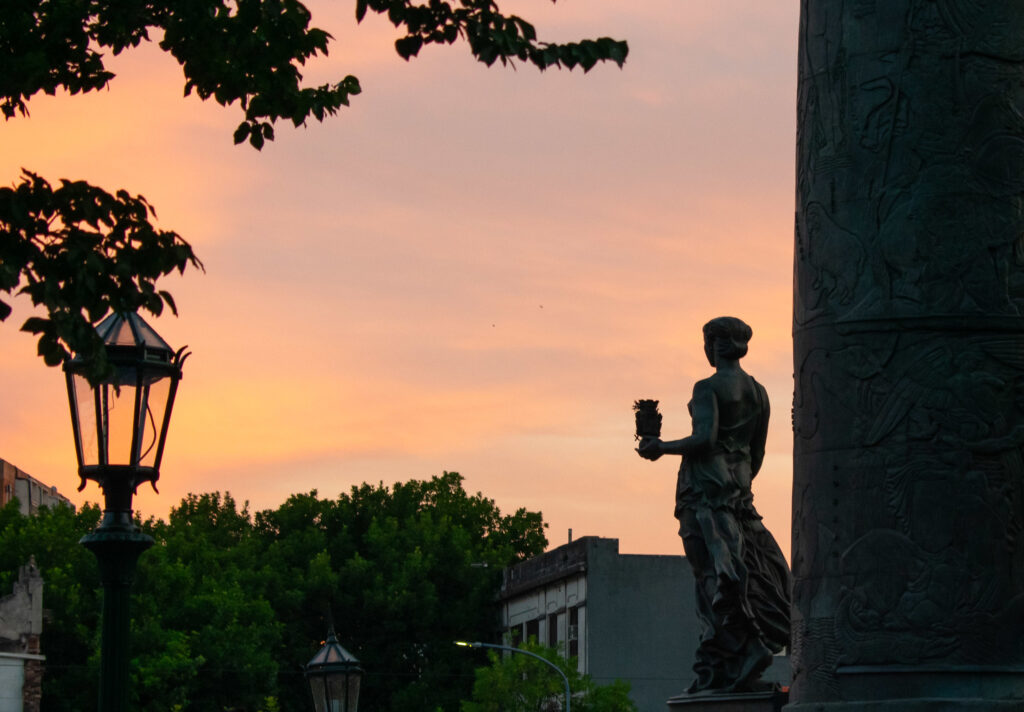
Public Transport Network in San Telmo
Despite being a relatively small neighborhood, San Telmo is centrally located and well-served by Buenos Aires’ public transport network.
Subway
The A, C, and E subway lines can get you within a few blocks of San Telmo. The A line runs East-West along Avenida 25 de Mayo, from which you can walk down to San Telmo. The C and E lines run North-South, making them convenient options as well.
Train
Near San Telmo, you will find Constitución Station, one of the most important hubs in Buenos Aires’ railway system. Many train lines start and end their routes here.
Bus
Various bus lines run around the edges of San Telmo, as efforts are made to preserve the historical buildings from pollution. Some of these bus lines include 8, 22, 24, 29, 86, 93, 126, 130, 143, 152, and 159.
Advantages of Living in San Telmo
- San Telmo embodies the tradition, culture, and identity of Buenos Aires like no other neighborhood.
- Walking through San Telmo feels like traveling back in time, with its historic buildings and cobblestone streets.
- For travelers, meeting other travelers is always a plus. San Telmo is a hub for digital nomads, expats, and tourists.
- The neighborhood is bustling with people, especially tourists, adding to its lively atmosphere. Saturdays are particularly crowded.
- Living in San Telmo is not a utopia; many hostels and hotels are available in the area.
- Staying in San Telmo allows you to easily explore other key areas of Buenos Aires, such as La Boca, Puerto Madero, the Microcentro, and Avenida 9 de Julio.
- You won’t encounter heavy traffic jams or congestions. The narrow streets and heritage preservation efforts discourage the use of private vehicles.
- Public transport access is very convenient with subways, Constitución Station, and bus lines providing easy connectivity.
- While San Telmo doesn’t have large shopping centers, it boasts markets and galleries that blend traditional architecture with products aimed at tourists.
Activities and Things to Do in the San Telmo Neighborhood (Buenos Aires)
The Most Beautiful Galleries to Visit
San Telmo features some unique and charming galleries. These are old houses converted into shopping arcades, preserving their original structure with minimal alterations for safety.
The Solar de French, Galería del Viejo Hotel, and Pasaje de la Defensa (Casa Ezeiza) are notable galleries with magical corridors and special shops.
The San Telmo Market
This market is a treasure trove of antiques, food, coffee, and more, located in the heart of San Telmo. It appears like any other historical building, but once inside, you’ll find a maze of shops where the aroma of coffee competes with the scent of food.
The building retains much of its original structure, with metal beams and framework. Choosing a single shop to spend your time in can be a delightful challenge.
Plaza Dorrego
Plaza Dorrego is a National Historic Monument as it was the site where the people of Buenos Aires gathered in September 1816 to hear the proclamation of independence. Located in the heart of San Telmo, many 19th-century mansions around the plaza have been refurbished into cafes, antique shops, and high-end restaurants.
The square also attracts numerous street artists. Plaza Dorrego is one of the few fully paved plazas in Buenos Aires, hosting a beautiful craft fair on weekends.
El Zanjón de Granados and the Casa Mínima
This complex is situated in what was the seventh and final southern block of the city founded in 1580 by Juan de Garay, due to a stream that ran through it. In the 1980s, the current owner discovered archaeological remains while restoring an Italian-style house.
Excavations revealed tunnels, cisterns, wells, utensils, containers, and construction remnants from the 1700s, 1740s, and 1830s beneath the mansion and adjacent buildings.
Alongside El Zanjón de Granados, you can visit the Casa Mínima, a historical building known for its tiny size. Both attractions, just steps apart, offer a living testimony of Buenos Aires’ nearly 450-year history.
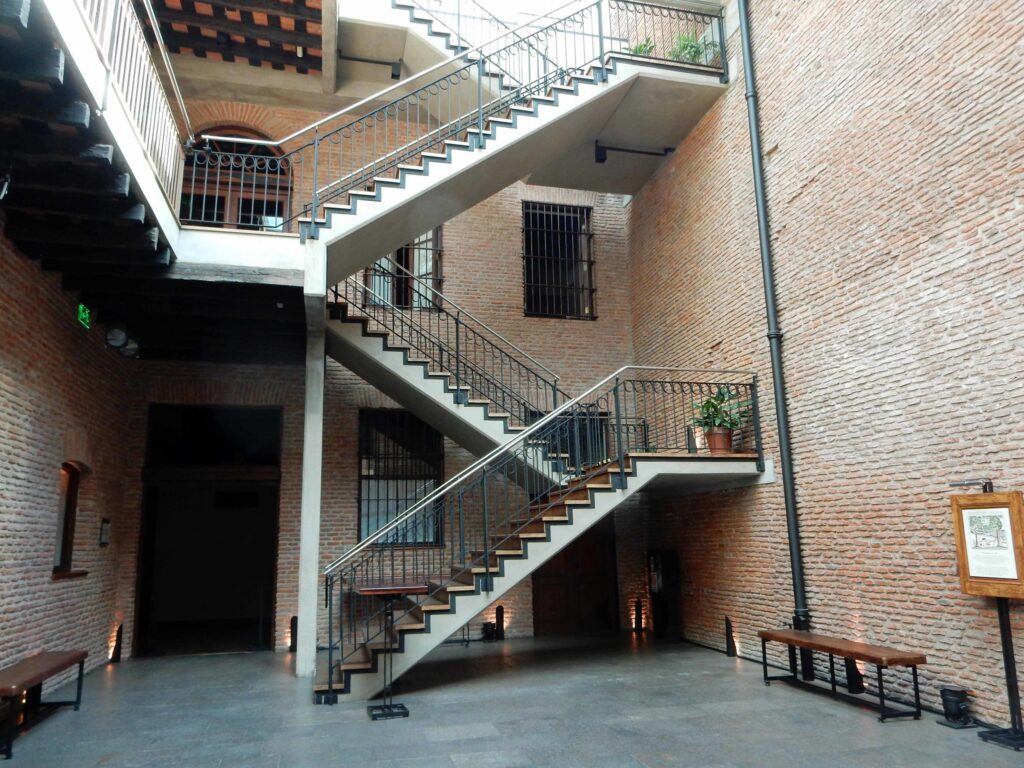
Notable Bars
The notable bars in San Telmo are an essential part of the neighborhood’s identity. These bars have witnessed the changes in San Telmo since the last century and maintain their original design and ambiance. They are officially recognized for their contribution to the neighborhood’s heritage and history.
Bars like La Poesía, El Federal, and Bar Colonial are some of the notable bars where you can enjoy a typical Buenos Aires coffee and delicious food. These bars offer breakfast, brunch, and more substantial meals.
Restaurants
San Telmo offers a variety of restaurants, ranging from traditional Argentine grills to Spanish, Italian, and buffet-style eateries.
These are primarily located in the adjacent Puerto Madero area, heading east towards the Río de la Plata. For a more casual dining experience, you’ll also find burger joints and cocktail bars with good music and drinks for a lively evening.
Comic Strip Walk
The Paseo de la Historieta is located on Balcarce Street, starting at Plaza de Mayo and running down to Parque Lezama, where it becomes Avenida Regimiento de Patricios. This walk pays homage to iconic Argentine comic characters, including Mafalda.
At the intersection of Defensa and Chile, you’ll find a statue of Mafalda with her friends Susanita and Miguelito. The queue for photos with Mafalda can be long, but it’s a memory you’ll cherish from your trip to Buenos Aires.
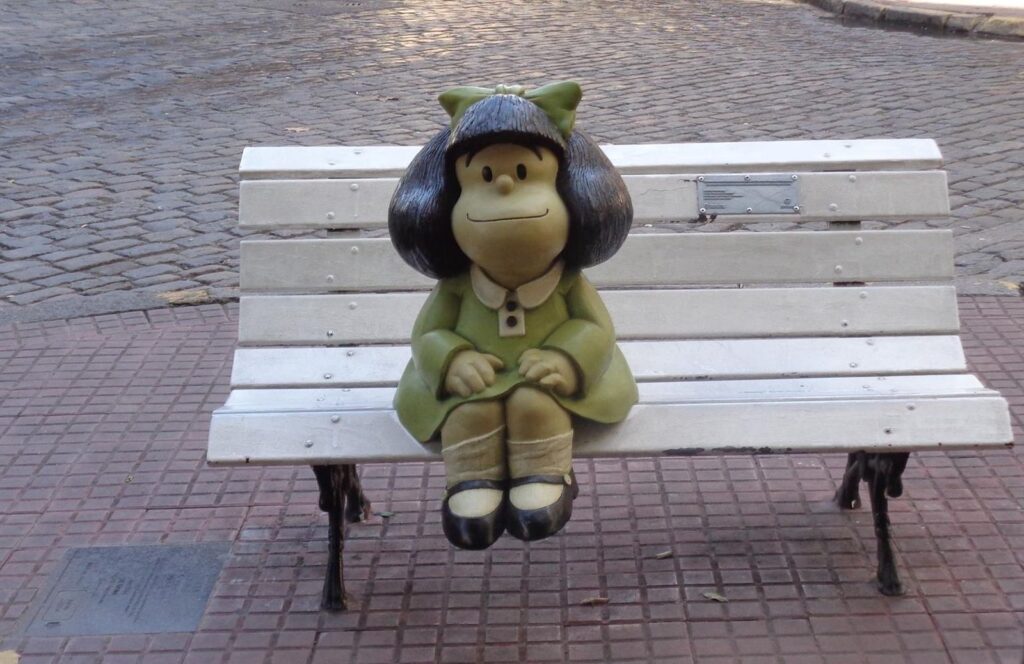
Last Considerations
Are you ready to immerse yourself in the captivating essence of Buenos Aires? San Telmo is a must-visit for any digital nomad, traveler, or expat seeking to experience the city’s vibrant history and culture.
With its blend of historical landmarks, bustling markets, and lively social scenes, San Telmo (Buenos Aires) promises an enriching adventure.
Let this guide by ExpatPathways help you navigate and uncover the many hidden gems of this iconic neighborhood, ensuring your stay is both memorable and fulfilling.
(Featured Image Source: geigerwe/flickr.com)


